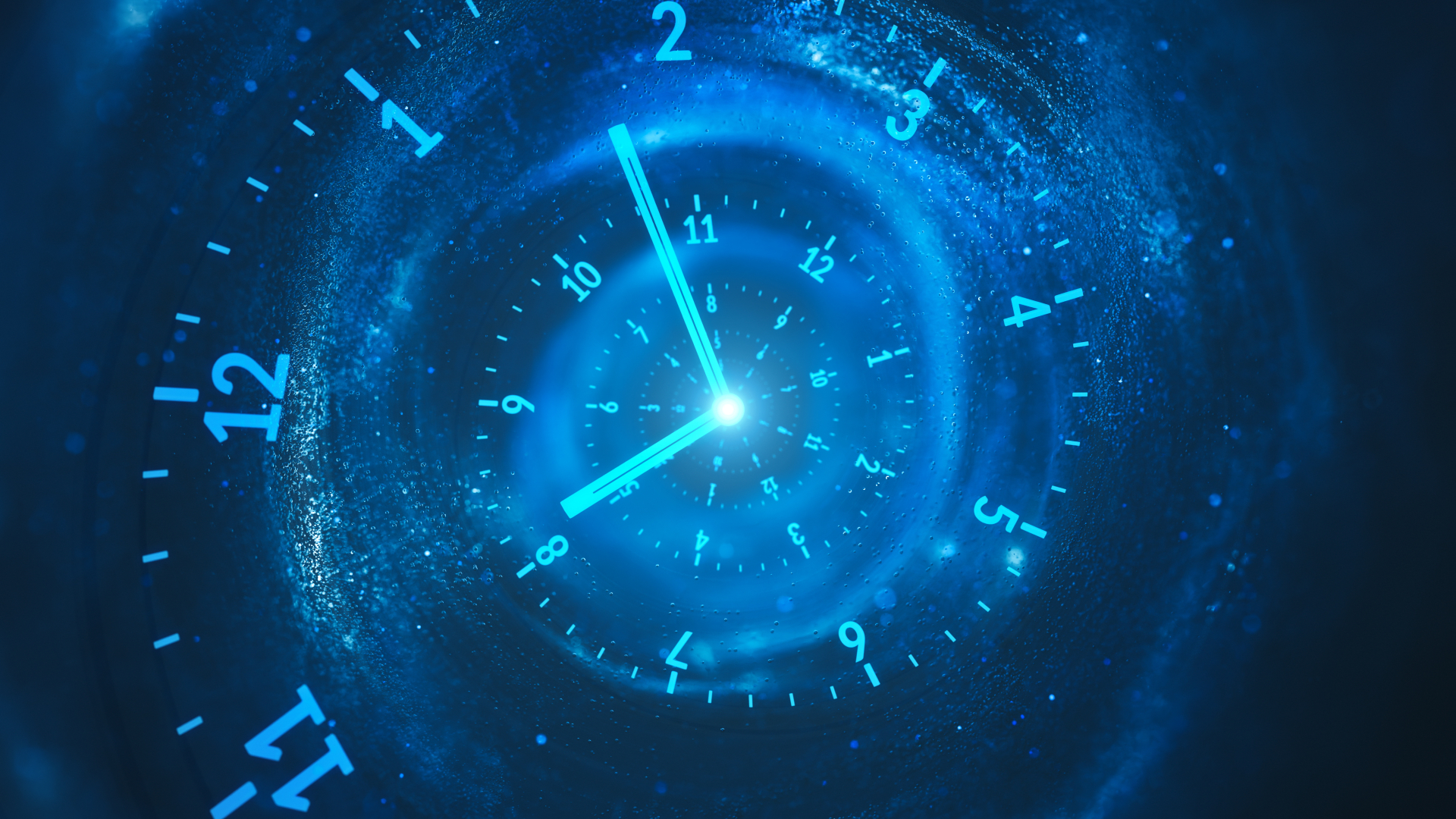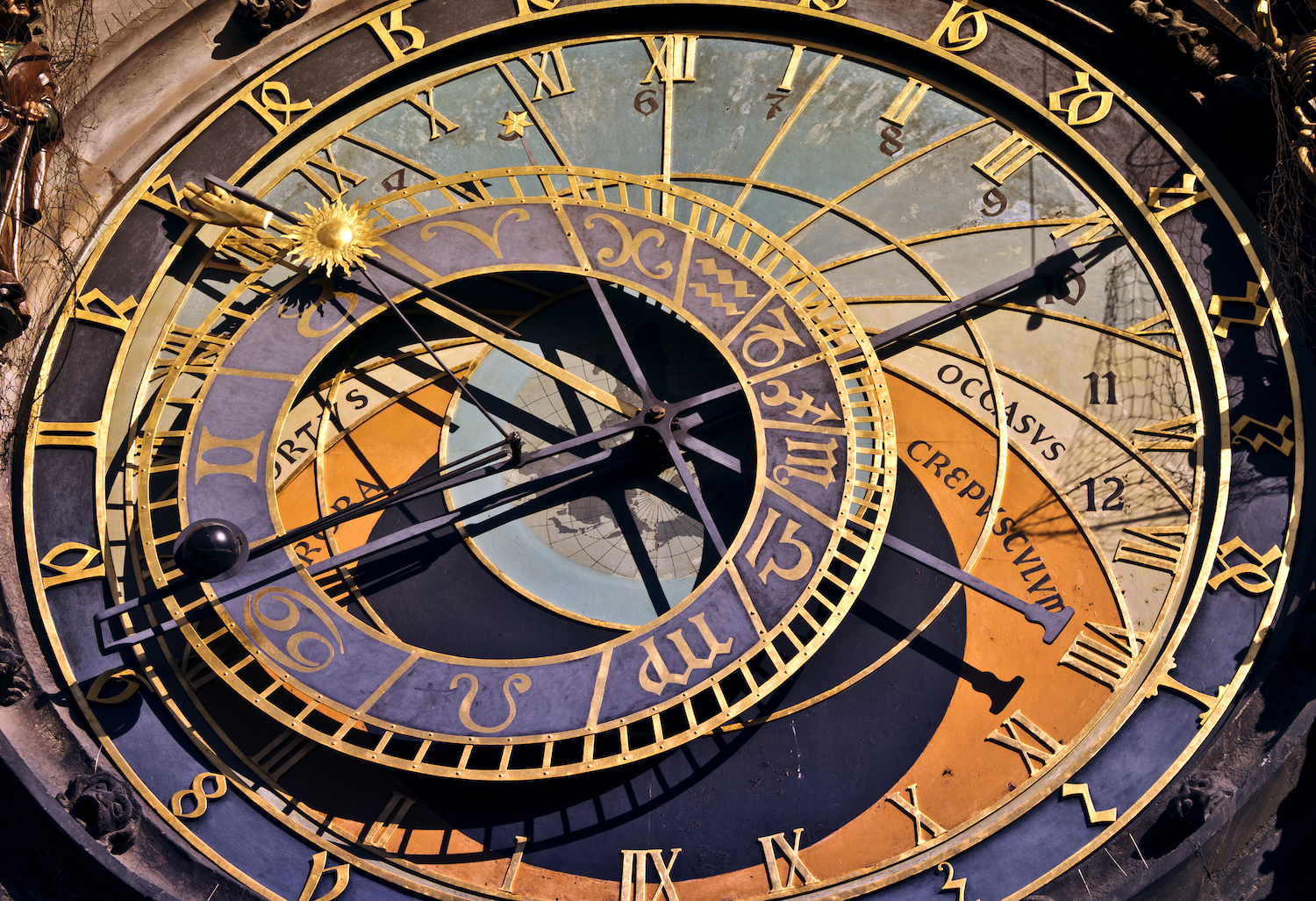What is the grandfather paradox?
Perhaps no implication of time travel is as troubling as the grandfather paradox.

The grandfather paradox is an example of a problem arising from the effect of time travel on causality, the idea that a cause must precede its effect. The paradox suggests that a cause is eliminated by its own effect, thus preventing its own cause and essentially becoming reverse causation.
The classic analogy for this, and the one that gives the paradox its name, is a time traveler journeying back in time and killing their own biological grandfather before they can sire children. This means the time traveler could never have come to exist and, as a consequence, can't travel back in time and thus can't kill their own grandfather. That means they then are born and can go back in time, hence the paradox.
The grandfather paradox has been a trope of science fiction, appearing in Ray Bradbury's short story "A Sound of Thunder," the classic movie "Back to the Future" and many other works. But the grandfather paradox isn't limited to the realm of fiction. Philosophers and physicists began seriously thinking about the grandfather paradox when Albert Einstein's theories of special and general relativity suggested that time travel may be a theoretical possibility.
Related: Was Einstein wrong? The case against space-time theory
The grandfather paradox explained
Einstein's theory of special relativity proposes that space and time are actually one unified entity called space-time and also introduced a universal speed limit for particles of mass, setting this at the speed of light (c).
So no particle with mass could accelerate to the speed of light, as this would take an infinite amount of energy. But scientists following Einstein's work, including Columbia University physicist Gerald Feinberg, suggested the existence of hypothetical particles that could be caught speeding. Traveling faster than light, these massless particles — which Feinberg dubbed "tachyons" in a 1967 paper — would travel backward through time, thus introducing the concept of time travel to physics that went way beyond idle speculation.
Einstein would take this idea further with general relativity, the idea that space-time itself can be shaped by mass and energy and that gravity is a result of this influence. The idea that space and time were no longer static stages on which the events of the universe simply play out earned general relativity the alternative name "the geometric theory of gravity."
Breaking space news, the latest updates on rocket launches, skywatching events and more!
From general relativity, mathematician Kurt Gödel formulated the idea of closed timelike curves (CTCs), paths through space-time that return to their starting point without violating special relativity. CTCs come in two primary types, unimaginatively titled Type 1 and Type 2.
Type 1 allows a time traveler to journey along a CTC through space and time and into the past and, when there, interfere with their past self. This is therefore a model of CTC that allows the grandfather paradox to happen, at least in theory.
In the Type 2 model, CTCs follow a principle of self-consistency also known as the Novikov self-consistency principle, or Niven's law of the conservation of history, that forbids time-travel paradoxes from being created.
This places certain events in order along the same CTC. These events would be effects and their causes, ensuring that causality never ran "backward." This self-consistency programmed into time travel would mean our time traveler couldn't kill their grandfather no matter how hard they tried. Some aspect of the universe would prevent it, the rifle would jam, the car would be diverted or some other intervention would save grandfather.
The message from this is clear: The grandfather paradox doesn't prevent time travel; it just prevents traveling back in time and doing something to violate causality.
But is there any way time travelers hopping on a Type 1 CTC into the past can be prevented from triggering the grandfather paradox? One interpretation of quantum mechanics, the physics of the subatomic, suggests yes.
Can quantum physics save Grandfather?
Quantum physics could prevent the grandfather paradox via physicist Hugh Everett's many-worlds interpretation of quantum mechanics, according to the Stanford Encyclopedia of Philosophy.
The fact that a quantum system is described with wave mechanics means that a system can be depicted in overlapping states or a superposition of states, according to George Mason University. This means that a system described quantum mechanically can simultaneously have seemingly contradictory values.
So an electron could be in a superposition with both "up" and "down" spin states simultaneously. This persists until the electron is measured or interacts with another system and its spin resolves as either up or down. This concept is described as a collapse of the superposition in the most favored interpretations of quantum physics.
Why this collapse occurs has been a long-standing mystery, but Everett avoided this superposition collapse altogether. Instead, he suggested that the superposition grows exponentially to envelop the entire universe and then create an individual "world" for each potential value of the quantum system. So, in effect, according to Everett, an experimenter measuring the spin of an electron is swallowed by the experiment and is actually discovering if they are in a world in which the spin is up or one in which it is down.
In a 1991 paper in the journal Physical Review D, quantum computing pioneer and physicist David Deutsch imagined how the many-worlds concept would apply to time travel, envisioning a particle traveling along a CTC loop through time in a superposition of states. He posited that to avoid paradoxes during the journey and when the particle follows the CTC back to its starting point, a new world would be created for each possible state.
Imagine this is the case of a human time traveler journeying back in time to kill their grandfather. When the time traveler arrives back in 1963 from 2022, they leave world A and create a distinct world, World B, the world in which they arrive. World B would be different from World A, because in the established timeline of World A, a time machine carrying our time traveler never appeared in 1963.
That means that if the time traveler were to kill their grandfather during this excursion into the past, their existence wouldn't be threatened because it would not be their World A grandfather who died. Instead, it would be a World B copy of him — split away as soon as the time machine materialized in 1963 — who would be killed.
One of Everett's provisos for the many-worlds interpretation was that worlds can't interact, so conceivably, a time traveler creating World B and finding themselves in its past couldn't return to World A and their present.
This also could explain why we've never seen a time traveler from the future announce their arrival in our time. We could be in a primary world, World A, from which time travelers depart, never to return.
Can an experiment demonstrate the grandfather paradox?
As far as we know — possibly because all time travelers are caught in other worlds — time travel isn't experimentally possible.
But Seth Lloyd, a professor of mechanical engineering at the Massachusetts Institute of Technology and a self-described 'quantum mechanic," has been experimenting with the "next best thing" to time travel in the lab for over a decade.
In 2010, Lloyd and his team developed a quantum simulation that replicated an "in principle" time machine that combined CTCs with quantum teleportation, a technique for transferring quantum information from a sender to a receiver. The transfers is based on quantum entanglement and is analogous to travel through a CTC.
To this idea, they added a post-selection mechanism, a way of giving a quantum computer the power to choose the outcomes of certain measurements, thus making the quantum system deterministic rather than probabilistic as quantum physics usually is.
Using the simulation, Lloyd then sent photons a few billionths of a second backward in time with a mission to "terminate" their previous selves.
The team found something remarkable: The closer a photon got to fulfilling this "Terminator"-like mission — and thus achieving reverse causality and something logically inconsistent — the more frequently the experiment failed. The results suggest that actual time travel would work in the same way: Any journey that would result in the grandfather paradox being triggered would be doomed to failure before it could begin. So Granddad can breathe a sigh of relief … for now.
Additional resources
Explore the grandfather paradox and time travel in more detail with these articles published on Astronomy Trek and Scientific American. Read about the Futurama episode "Roswell That Ends Well," in which Phillip J. Fry takes an NSFR (not safe for robots) trip back to Roswell in 1947 to visit his grandfather and grandmother — possibly the most disturbing trip back through time ever told in fiction.
Bibliography
Time Travel and Modern Physics, Stanford Encyclopedia of Philosophy, [Accessed 12/11/22], [https://plato.stanford.edu/entries/time-travel-phys/]
S. Lloyd, et al, 'The quantum mechanics of time travel through post-selected teleportation,' [2010], [https://arxiv.org/abs/1007.2615]
Time Travel, Stanford Encyclopedia of Philosophy, [Accessed 12/11/22], [https://plato.stanford.edu/entries/time-travel/#GraPar]
The Grandfather Paradox, A Time Travel Website, [Accessed 12/11/22], [http://timetravelphilosophy.net/topics/grandfather/]
D, Deutsch, Quantum mechanics near closed timelike lines, [1991], Physical Review D, [https://journals.aps.org/prd/abstract/10.1103/PhysRevD.44.3197]

Robert Lea is a science journalist in the U.K. whose articles have been published in Physics World, New Scientist, Astronomy Magazine, All About Space, Newsweek and ZME Science. He also writes about science communication for Elsevier and the European Journal of Physics. Rob holds a bachelor of science degree in physics and astronomy from the U.K.’s Open University. Follow him on Twitter @sciencef1rst.


